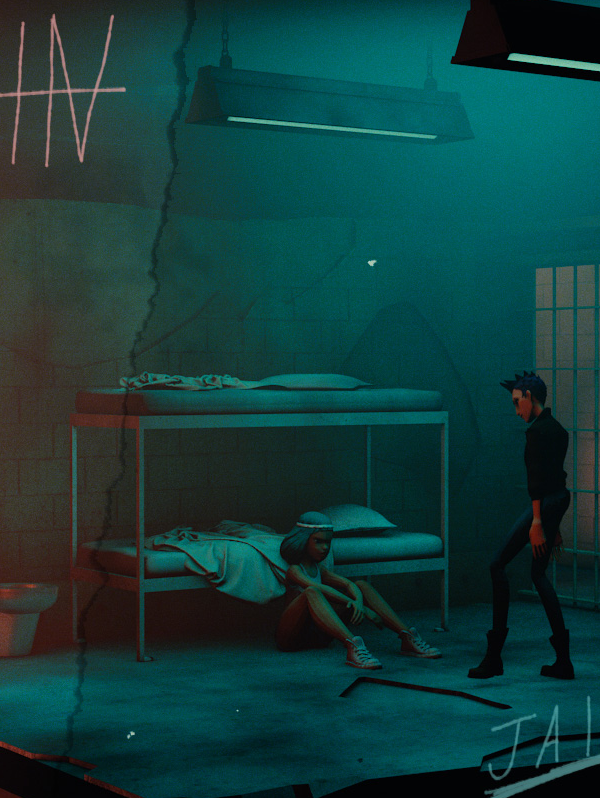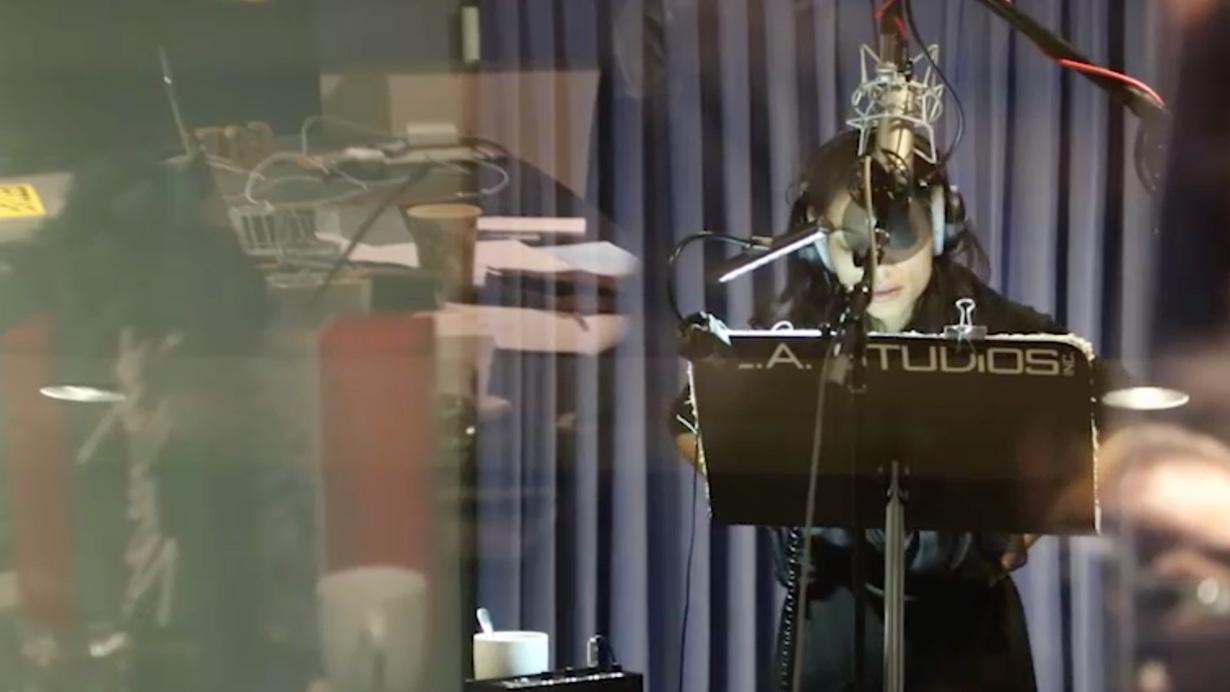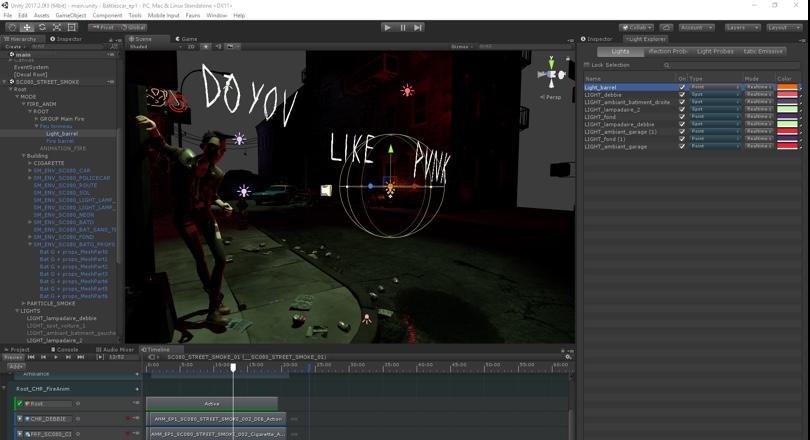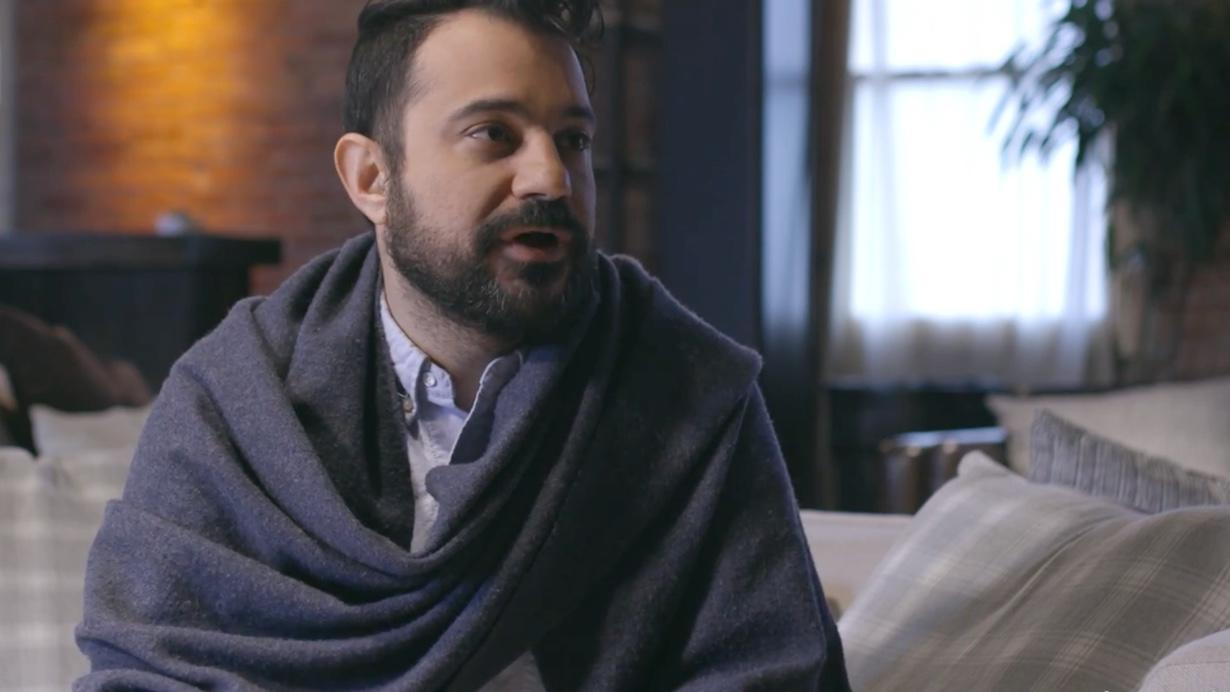BattleScar plays with mixed media throughout and the visuals aggressively change scale. You move from first-person POV to dioramas of the two characters – as if you’re watching them on a theatre stage – to looming over the runaways from 20 feet above a dirty NYC street. The animation is a collision of stop motion and graffiti, with the characters looking like little punk puppets.
In yet another unique narrative choice, the creators decided to constantly use an animated font and text to bring the character’s journal (and the music) to life. The text shoots off the pages and punk lyrics fly at you as scribbles and sketches, often reminiscent of punk tattoos etched on the screen.








